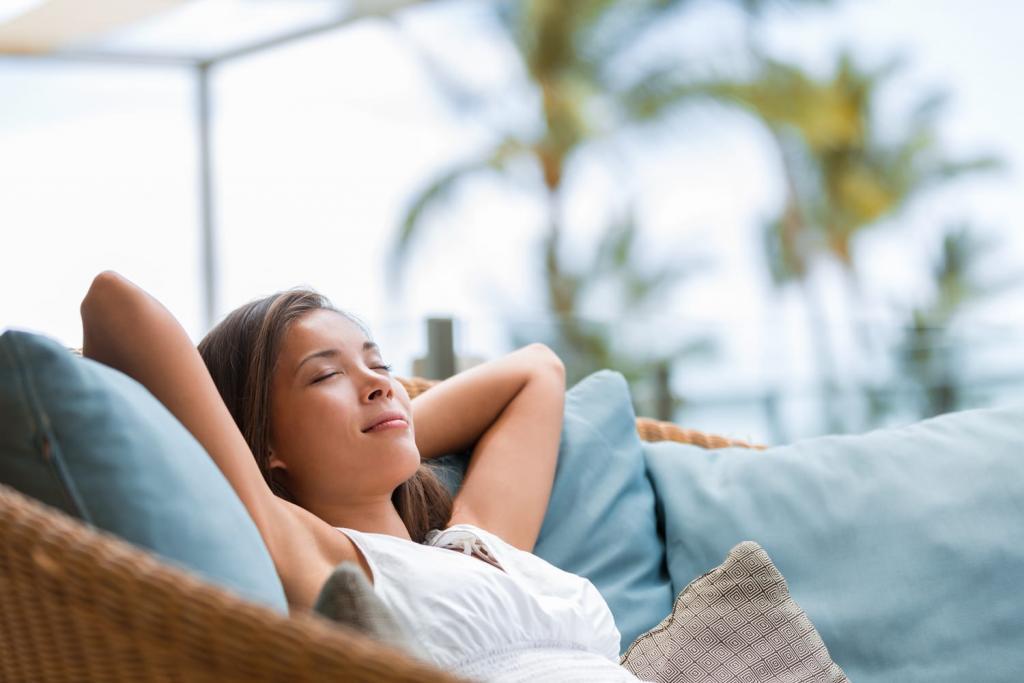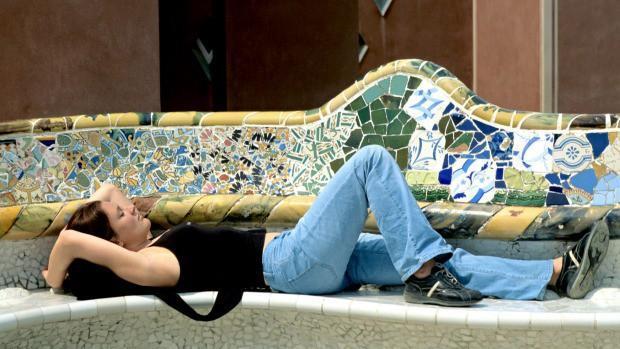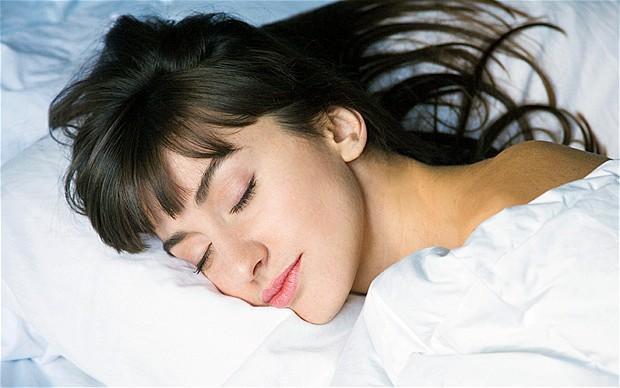Spending time at home in the afternoon has become more frequent as more people choose to work from home. Working remotely allows employees the luxury of taking a break from their work to read a book or even nap after their lunch instead of immediately returning to their desks.
Many Americans have never taken a nap during their lunch hour. In some parts of the world, the practice of taking a nap in the middle of the day is not a new one. Although it’s unclear to determine exactly when siestas began, the custom undoubtedly dates back to the early Roman Empire, even if it’s most generally associated with Spain today.
You are reading: What Is a Siesta? 5 Benefits of the Siesta
What Is a Siesta?
“Sixth hour” refers to the time of day in Spain and other hot countries when shops would close for a few hours in the afternoon to cool down. People were able to rest, eat, and avoid the heat as a result of the closure. When working in Spain, a typical workday would begin at 9 am until 2 pm, then take a two-hour break for the siesta, and then resume at 4 pm until 8 pm. A mid-afternoon snooze is colloquially referred to as a “siesta.”

Benefits of the Siesta
Taking a midday nap can do wonders for your health, from improving your memory to decreasing your blood pressure. A little snooze can work wonders for those of us who are chronically sleep deprived. To avoid “sleep inertia” — a deep grogginess that can be difficult to get up from – most sleep specialists recommend no more than a ten- to twenty-minute snooze. Take a 15-minute snooze break and reap the following benefits.
Boosts Memory
Researchers found that taking naps of 10, 20, and 30 minutes helped individuals perform better on memory and alertness tests administered two and a half hours later. While individuals who slept for more than 20 minutes felt drowsy, those who slept for just 10 minutes woke up feeling refreshed.
Lowers Blood Pressure
It’s possible that the lessened stress on the cardiovascular system from daytime sleep contributes to the “siesta habit,” according to research published in the Journal of Applied Physiology. Naps have been linked to lower rates of coronary mortality, but researchers confess that they don’t know for sure if this is due to the benefits of the sleep itself, a reclined position, or the mere expectation of a nap.
Calms Your Nerves
A University of Berkeley study indicated that taking a 90-minute nap could help you stay calm. Participants in the research were presented expressions of anger, fear, and happiness at noon, and then again at 6:00 p.m., and their responses were significantly different. After a 90-minute lunchtime nap in which the subjects experienced REM sleep, they observed that the subjects were substantially more distressed by angry and frightening faces at the end of the day.
Enhances Creativity
A good nap is one of the best things you can do for your brain. You may have heard that getting enough sleep during the day will help you be more creative, accelerate your cognitive processing, improve your memory recall and overall get rid of the cobwebs.
Boosts Willpower
Since you’re weary, it’s hard to stay focused, especially when your willpower is at its peak in the morning when your brain is more alert. It’s difficult for the brain to ignore distractions and maintain impulse control when you’re sleep deprived. Taking a mid-day “power nap” can help restore your willpower. Relaxation and rejuvenation are just a few of the benefits of taking a sleep.
Workplace Siesta Around The World
Despite the numerous well-known advantages of a siesta, it is still uncommon practice in the West to take a nap during the workday. Asian countries, on the other hand, view snoozing as a good thing. There’s a term for that in Japan: “inemuri,” which translates to “sleeping while you’re here.” Sleeping while at work is considered a sign of overexertion in Japanese culture, and as a result, is seen as a sign that a break is in order. We are still a long way from fully accepting the customs of the rest of the world here in France.
Read more : Why Do I Sleep So Much? A Perfect Guide For You!
Trends, on the other hand, change throughout time. Habits are shifting across Europe, particularly in the Scandinavian countries and Germany. Companies in France are increasingly implementing steps to aid employees in unwinding and recharging as a result of the high levels of stress they may be exposed to. La relaxing at work, like sharing the load of work or good connections between coworkers, is no more an optional extra; rather, it is becoming an intrinsic component of what it means to be happy at work. More and more businesses are encouraging employees to take a break, with 57% saying they’d like to see that happen. NASA found that having a sleep can boost productivity by 35%, in addition to re-energizing your team after a long day’s work.
The Spanish Siesta
Spanish culture is unique among sleeping civilizations in that it favors midday snoozes. The practice of napping is so revered in Spanish society that the name “siesta” has been coined to describe it.
Siestas are widespread in the Mediterranean region, when people take a snooze in the middle of the day. Term siesta is derived from Latin “hora sexta” or “sixth hour,” which refers to a midday nap six hours after a person has been awakened. The afternoon siesta is most commonly linked with Spanish culture. A typical siesta period is between 2pm and 5pm, but this varies from place to place.

Siestas are taken quite seriously in several Spanish towns. In the late afternoon, many businesses close their doors for lunch and a nap. Mothers even stop their children from playing and bring them inside to keep the streets quiet.
There are places in Spain where the siesta is taken quite seriously. Many businesses close for lunch and a short nap in the late afternoon. Some moms will even stop their kids from playing outside and bring them inside to help keep the neighborhood peaceful and orderly.
There are numerous health benefits linked with taking a siesta in the middle of the day. When it comes to boosting alertness and cognitive performance, napping is a good idea. Cardiovascular disease is less likely to claim the lives of adults in the Mediterranean region who regularly nap.
The Italian Riposo
Taking a nap in the middle of the day isn’t just a Spanish tradition. The “riposo” (afternoon break) is a modern Italian term. During the hottest part of the day, many Italian businesses close early or late in the afternoon, allowing the owners to go home, have lunch, and take a little sleep.
People in Italy, like those in other countries, reap the benefits of a regular nap. One study found that older Mediterranean seniors, especially Italians, who napped in the middle of the day had better diets, higher levels of physical activity, and overall healthier aging.
The Japanese Inemuri
People in Japan sleep less than people in virtually any other country because of the country’s intensive work and study ethic. Japan has a napping practice called “inemuri” that means “being present while asleep” and was intended to help those who were feeling tired.
Inemuri is not the same as the siesta and riposo of the early afternoon. Inemuri is the practice of napping whenever and wherever one can get away with it. People in Japan frequently take naps wherever they happen to be, be it in a park, on the metro, in a library, or even at their desk.
As a result of this cultural shift, inemuri has become more acceptable in Japan than it would be elsewhere. In the West, napping tends to be linked with lethargy or sloth. Inemuri, the Japanese term meaning working oneself to exhaustion or sacrificing one’s overnight sleep in the name of productivity, is a common expression in Japan.
Read more : How Does Being A New Parent Affect Sleep? 8 Tips for Quality Rest
In Japan, Inemuri looks to have the same benefits as siestas or riposos for its residents. Studies have shown that napping and moderate exercise can improve the quality of sleep and mental health in the older Japanese population. Japanese shift workers’ alertness and circadian rhythm modulation are both improved by napping.
Snoozing in the Scandinavian countries of Norway, Denmark and Finland is a common pastime. Even in sub-zero conditions, parents in these countries routinely leave their newborns and young children outside for a daily nap.
Nordic parents feel that allowing their children to sleep outside in the winter helps them adapt to the tough conditions. Children can spend more time outside as they develop if they become used to being exposed to the elements early on. In addition, parents believe that the chilly air encourages deeper sleep because youngsters tend to take longer naps outside than inside.
Adverse Effects of Napping
Some research suggests that napping for brief periods may improve overall cognition and memory, however this may not hold true for all age groups. Adults over the age of 65 who frequently nap during the afternoon are more likely to experience an increase in inflammation. Middle-aged women who snooze for more than an hour are more likely to develop hypertension than males, but this is not the case for men.
It’s also possible that those who have a history of heart problems are more likely to have an attack after a long slumber. A decrease in blood pressure during a slumber, followed by an increase in blood pressure upon waking, may have a negative influence on heart health in the elderly. Also, there is evidence that naps in elderly populations can worsen depression symptoms.
Consult your doctor before adding an afternoon sleep to your schedule if you have a history of cardiac problems or are an older adult.
Creating a relaxation room at work
Previously, the workplace relaxation area would have been seen as a strange and outlandish addition. Today, business owners perceive this cocoon as a place where their staff may rest and de-stress from the pressures of work. The need for a quiet place to rest and recharge is becoming more and more common. Setting up a break room, on the other hand, necessitates advance planning. A zen-like atmosphere, favorable to slumber, can be achieved through remodeling initiatives that adhere to a set of guidelines. To begin, look for a room with enough of natural light and enough square footage to prevent a claustrophobic atmosphere. Partitioning off a space for naps is a must. In reality, each chair should be separated from the others so that each person may truly relax. The room can be decorated with a diffuser, hangers and eye masks, as well as blankets, a trinket tray and a coffee table. Noise and pedestrian traffic should also be kept out of the room. There should be a lot of bright signage, such as a ban on eating, speaking in a loud voice, or using a phone in specific areas or at particular hours. Pastel colors and a variety of light sources are ideal for rest spaces.
The furniture will be simple and unobtrusive, allowing light and air to flow freely through the area. The goal is to avoid cramming too many couches into the room. Taking a siesta, on the other hand, is preferable to sitting up rather than lying down altogether. Choosing a zero-gravity position is a good idea. The spinal column is in a neutral position, stress is lifted from the back, and circulation is improved in this semi-lying position because the legs are elevated and the thighs and chest make a 127° angle. Recliner chairs that are fully ergonomic are the best choice for ensuring that workers get the rest they need. These new features will only help to improve the quality of life at work.

Tips for Taking a Siesta
Incorporating a siesta or daily sleep into your schedule may be an effective method to get some much-needed R&R. Here are a few pointers to help you start taking power naps during lunch:
- To prevent glare, use an eye mask or a dark environment. When you’re in the dark, it’s easier to go to sleep.
- Find a place to rest your head. Despite the fact that napping on the couch is more convenient, you may find that napping on the bed is more pleasant and may help you fall asleep sooner.
- Avoid feeling sleepy or drowsy by setting an alarm clock for around 20 minutes after your snooze.
- A few hours before you plan to take a nap, adjust the temperature in your bedroom to a cozy setting.
- Try taking a sleep before lunch if you have acid reflux or heartburn.
- For those who have never slept during the day, try a guided meditation or soothing music to help you drift off to sleep more quickly.
When Should I Consider Napping?
Consider adding a quick power nap to your regular routine if you’re able. For individuals who can’t make it a daily habit, here are several situations when a nap could still be beneficial:
- If you’re feeling tired or sleepy for the first time in a while.
- If your work or mood is being harmed as a result of your lack of sleep, seek help.
- Take a nap if you know you’ll be unable to sleep for an extended period of time, such as if you have a lengthy shift at work.
- In the event that you are just beginning to incorporate napping into your daily regimen.
What do you think?
Source: https://bestpillowsleepers.com
Category: Sleep Advisors





